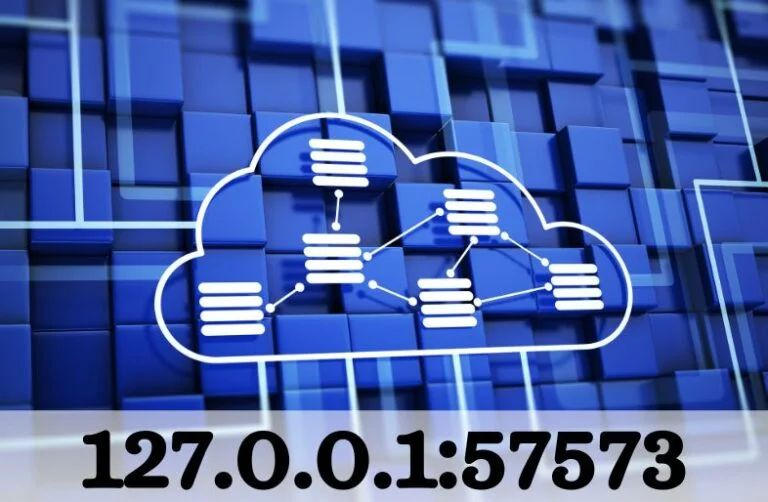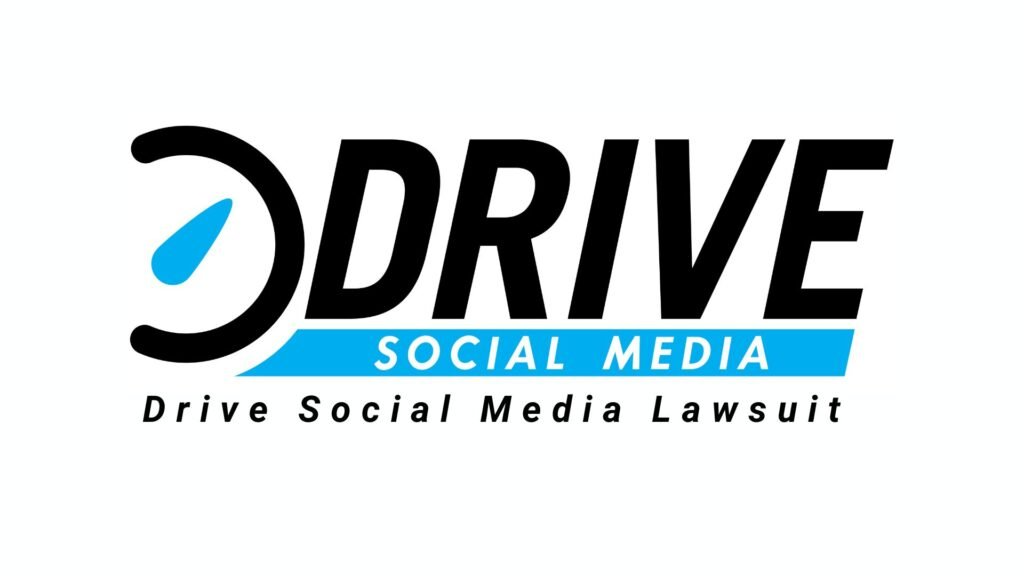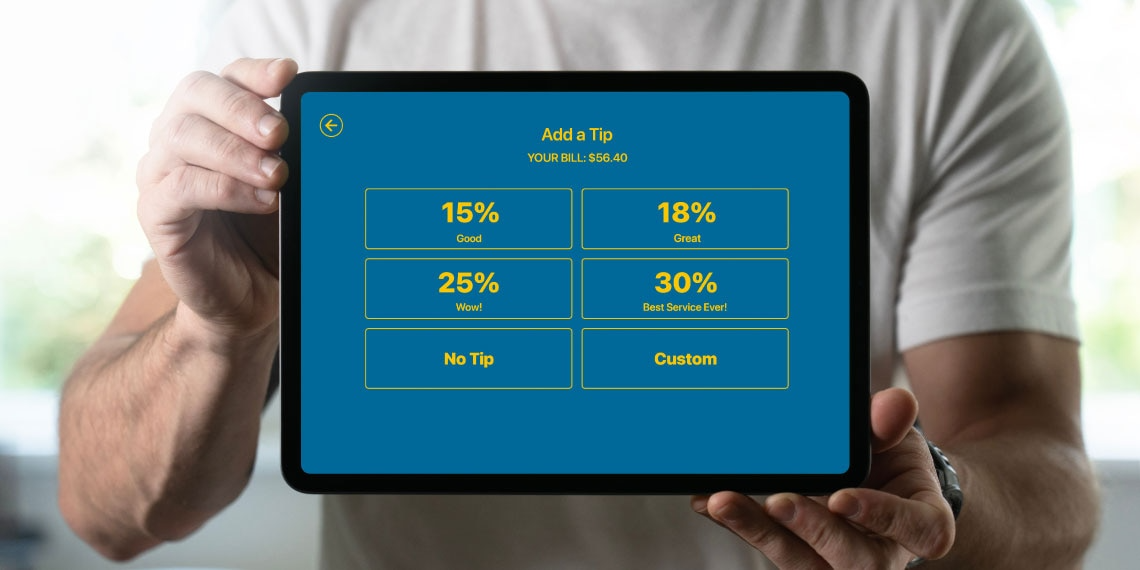TECH
Understanding 127.0.0.1:57573: A Complete Guide to Localhost Connections

When it comes to networking, understanding localhost connections is crucial for troubleshooting and optimizing your systems. One key address you’ll encounter is 127.0.0.1:57573. This article provides a comprehensive guide to help you understand what 127.0.0.1:57573 is, how it works, and how to troubleshoot common issues related to localhost connections. We’ll ensure the content is easy to read, SEO-optimized, and informative.
What is 127.0.0.1?
127.0.0.1 is known as the loopback address, a special IP address that refers to the local machine. It is used to establish a connection to the same device that is running the application or service. In simple terms, when you use 127.0.0.1, you are telling your computer to talk to itself.
How to Access and Use 127.0.0.1:57573
Accessing 127.0.0.1:57573 is straightforward for anyone familiar with web development tools. Start by opening a web browser of your choice.
In the address bar, simply type “http://127.0.0.1:57573” and hit enter. This directs you to the localhost server running on that specific port.
If you’re using software like XAMPP or WAMP, ensure your local server is active first before attempting to connect.
Once connected, you’ll often see an interface related to your application or project setup on that port number.
You can interact with it just as you would with any other website, making testing features seamless and efficient.
Importance of the Loopback Address

The loopback address is crucial for several reasons:
Testing and Development: Developers often use 127.0.0.1 to test applications without needing an internet connection.
Local Services: Many local services, such as databases and web servers, run on this address, allowing applications to communicate with them.
What is the Significance of the Port Number 57573?
In the context of 127.0.0.1:57573, the port number 57573 is just as important as the IP address. A port number allows multiple services to run simultaneously on a single device without conflict.
How Port Numbers Work
Port Ranges: Port numbers range from 0 to 65535. Ports 0-1023 are reserved for well-known services (like HTTP on port 80), while ports 1024-49151 are registered for specific applications.
Dynamic and Private Ports: Ports 49152-65535 are dynamic or private ports. Port 57573 falls within this range, indicating it is available for custom applications.
How to Use 127.0.0.1:57573
Using 127.0.0.1:57573 typically involves connecting to a specific application or service running on your machine. Here’s how you can do it:
Step 1: Start the Service
Before you can connect to 127.0.0.1:57573, ensure that the service or application you want to access is running. For example, if you’re using a web server or database, start it according to its documentation.
Step 2: Use a Web Browser
To connect to a service running on 127.0.0.1:57573, open your web browser and enter the address in the URL bar:
Common Use Cases for 127.0.0.1:57573

Understanding the practical applications of 127.0.0.1:57573 can enhance your productivity. Here are some common use cases:
1. Web Development
Web developers often use 127.0.0.1:57573 to test web applications locally. By running a web server on this port, they can see how their application behaves without deploying it to a live server.
2. Database Connections
Many databases run on localhost, allowing applications to communicate with them securely. For example, a database management system (DBMS) may listen on 127.0.0.1:57573 to accept connections.
3. Debugging Applications
If you are developing an application that uses a server-client architecture, connecting to 127.0.0.1:57573 allows you to debug both the client and server components easily.
Troubleshooting Connectivity Issues with 127.0.0.1:57573
While using 127.0.0.1:57573 is generally straightforward, you may encounter some issues. Here’s how to troubleshoot common problems:
Problem 1: Service Not Running
Symptoms: When you try to connect, you receive an error message indicating the service is unavailable.
Solution: Ensure that the service or application intended to listen on 127.0.0.1:57573 is running. Check the application settings to confirm it’s configured to use the correct port.
Problem 2: Firewall Restrictions
Symptoms: Connection attempts to 127.0.0.1:57573 time out.
Solution: Your firewall settings may be blocking access. Add an exception for the application or temporarily disable the firewall to see if this resolves the issue.
Problem 3: Incorrect Configuration
Symptoms: You receive an error indicating a connection failure.
Solution: Double-check the configuration settings for the application. Ensure that it is set to listen on 127.0.0.1:57573.
The Importance of Localhost Connections
Localhost connections are essential for web developers and system administrators. They provide a safe environment to test applications without the risk of affecting live systems.
When you work on localhost, your changes can be made quickly. This speeds up development cycles significantly. You have complete control over the server settings, allowing for tailored configurations that fit your project needs.
Additionally, using localhost enhances security. Your data remains private as it never gets exposed to external networks during testing phases. This is crucial when dealing with sensitive information.
Furthermore, localhost allows for easier debugging. Developers can isolate issues in real-time without interruptions from other users or processes. It’s an effective way to iron out bugs before deploying applications publicly.
Best Practices for Using 127.0.0.1:57573
To ensure smooth operation and troubleshooting, follow these best practices:
1. Keep Your Software Updated
Regularly update your applications and services. New versions often come with important bug fixes and improvements that can enhance performance and security.
2. Use Strong Security Practices
Although 127.0.0.1 is a local address, security should never be overlooked. Use strong passwords for applications that require authentication and ensure your firewall is correctly configured.
3. Document Your Configuration
Maintain clear documentation of your application configurations. This makes it easier to troubleshoot issues and helps when onboarding new team members.
4. Monitor Performance
Regularly monitor the performance of your services running on 127.0.0.1:57573. Tools like monitoring dashboards can help you identify bottlenecks or issues before they affect your work.
Troubleshooting Common Issues with Localhost Connections
When dealing with localhost connections, issues can arise unexpectedly. One common problem is the inability to access 127.0.0.1:57573. This often relates to firewall settings blocking the connection.
Another frequent hiccup involves server configuration errors. Misconfigured ports or incorrect paths can prevent your application from responding as expected.
If you’re facing slow response times, check for background processes consuming resources on your machine. They may be affecting performance without you realizing it.
Sometimes, restarting your server or application can resolve temporary glitches that disrupt connectivity.
Benefits of Using Localhost for Web Development and Testing
Using localhost for web development and testing offers a myriad of benefits. First, it creates a safe environment. Developers can experiment without affecting live websites or applications.
Speed is another advantage. Localhost connections eliminate latency issues common with remote servers. This allows for faster loading times during development, making the process more efficient.
Moreover, working on localhost fosters better collaboration among team members. Everyone can access the same environment easily when set up correctly, streamlining feedback and iterative improvements.
Another key benefit is enhanced debugging capabilities. Developers can use various tools to identify and rectify errors in real-time without external interference.
Security Considerations for Localhost Connections
When working with localhost connections like 127.0.0.1:57573, security should be a priority. Localhost may seem safe since it’s confined to your machine, but vulnerabilities can still arise.
Misconfigurations in local servers can expose sensitive data or create entry points for malicious activities. Always ensure that your server settings are correctly configured and not left at default values.
Implementing firewalls is crucial even for localhost connections. They help prevent unauthorized access and can monitor traffic effectively.
Also Read: A Deep Dive into 127.0.0.1:62893: How It Works and Why It Matters
Conclusion
Understanding 127.0.0.1:57573 is essential for anyone working with localhost connections. This guide has provided a comprehensive overview of what 127.0.0.1 means, the significance of the port number 57573, how to use it, and common troubleshooting techniques.
By mastering these concepts, you can effectively manage your local services and quickly resolve connectivity issues. Whether you’re a developer, system administrator, or just someone looking to understand networking better, knowledge of 127.0.0.1:57573 will serve you well in your endeavors. Remember, maintaining best practices and regularly updating your configurations will help ensure a smooth experience with localhost connections.
FAQS
What is 127.0.0.1:57573?
127.0.0.1:57573 refers to a localhost connection where 127.0.0.1 is the loopback IP address, and 57573 is the port number. It is used to connect to services running on your local machine.
Why would I use 127.0.0.1:57573?
You would use 127.0.0.1:57573 to connect to applications or services (such as web servers or databases) hosted locally on your computer. It allows you to test and develop applications without an external network.
How do I connect to 127.0.0.1:57573?
You can connect to 127.0.0.1:57573 by entering the address in a web browser like this:http://127.0.0.1:57573
Alternatively, you can use command-line tools like Telnet or Curl to connect.
Why can’t I connect to 127.0.0.1:57573?
If you cannot connect to 127.0.0.1:57573, it could be due to several reasons, such as the service not running, firewall restrictions, port conflicts, or incorrect configuration. Ensure the service is running on this port and check your firewall settings.
What kind of services run on 127.0.0.1:57573?
Various services can run on 127.0.0.1:57573, including web servers, databases, and custom applications. Developers often use this setup for testing applications locally.
What should I do if port 57573 is already in use?
If port 57573 is already in use by another service, you can either stop the service using the port or change the port configuration of your current application to another available port.
Can I change the port number from 57573 to something else?
Yes, most services allow you to configure the port number they use. You can update the configuration file of your application or service to change the port from 57573 to another port that is free and available.
9. What are some common issues when using 127.0.0.1:57573?
Common issues include services not running, firewall restrictions, incorrect application configurations, or port conflicts. These can often be resolved by checking the service status, adjusting firewall settings, or changing the port.
10. Is 127.0.0.1:57573 secure to use?
127.0.0.1 is a loopback address, meaning it only allows connections from the local machine. It’s generally secure, but it’s still important to follow best security practices, such as using strong passwords for services and keeping your system updated.
TECH
The Rise of Internet Chicks: Shaping Trends and Building Communities

In the modern digital age, social media has revolutionized how we connect, communicate, and even influence one another. One of the most intriguing phenomena emerging from this new era is the rise of “Internet Chicks.” These are female social media influencers who have built their brands online, shaping trends and creating communities through platforms like Instagram, YouTube, TikTok, and Twitter. As Internet Chicks become increasingly influential, they play a critical role in how people consume media, interact with brands, and make lifestyle choices.
What are Internet Chicks?
Internet Chicks are social media influencers, typically women, who have carved out a niche in the online world. Unlike traditional celebrities, Internet Chicks are ordinary women who achieve fame through their online content. Whether it’s fashion, beauty, lifestyle, wellness, or even motherhood, these influencers create engaging content that resonates with their audiences.
What sets Internet Chicks apart is their authenticity. They share their real lives, struggles, successes, and experiences, making them more relatable to their followers. As they build their personal brands, they create communities of loyal fans who follow their advice, buy recommended products, and engage with their content on a daily basis.
The Importance of Internet Chicks on Social Media
Internet Chicks play a vital role in today’s digital world, especially on social media. These influencers have built strong personal brands by sharing authentic content that resonates with their followers. Unlike traditional celebrities, Internet Chicks connect with their audiences on a more personal level, offering relatable advice on topics like fashion, beauty, wellness, and lifestyle.
The Evolution of Social Media Influencers

Before the rise of Internet Chicks, the world of influencers was dominated by celebrities like actors, musicians, and athletes. These traditional influencers were known for their star power, but they often felt distant and unattainable. Internet Chicks changed this dynamic by bringing a more personal, approachable style to influence.
Over the last decade, platforms like Instagram, YouTube, and TikTok have empowered ordinary women to gain visibility, showcase their talents, and share their daily lives with the world. These platforms gave rise to a new kind of influencer: the Internet Chick. Unlike classic celebrities, Internet Chicks are seen as friends or peers by their followers, making their influence more powerful in terms of driving trends and shaping consumer behavior.
Building a Personal Brand: The Key to Success
One of the defining characteristics of Internet Chicks is their ability to build a strong personal brand. They craft an online persona that resonates with their target audience, ensuring that their followers see them as authentic and trustworthy. This personal brand is the foundation of their success.
To create a successful personal brand, Internet Chicks focus on several key elements:
Consistency: Internet Chicks maintain a cohesive visual identity, from the colors they use in their photos to the themes of their posts. This consistency helps build recognition and trust among their audience.
Authenticity: Audiences crave realness, and Internet Chicks deliver by sharing their honest experiences, opinions, and challenges. This transparency fosters deeper connections with followers.
Engagement: Internet Chicks actively interact with their fans, responding to comments, answering questions, and engaging in real-time conversations. This level of interaction builds a sense of community around their content.
Niche Focus: Many Internet Chicks specialize in a particular niche, such as fashion, beauty, wellness, or parenting. This focus allows them to connect with specific audiences who share similar interests, making their content more valuable and relevant.
Key Platforms for Internet Chicks

Internet Chicks utilize a variety of social media platforms to reach their audiences, and each platform offers unique opportunities for content creation and engagement.
Instagram: Visual Storytelling at Its Best
Instagram is one of the most popular platforms for Internet Chicks. Known for its visual appeal, Instagram allows influencers to share photos, videos, and stories that showcase their personal style, beauty tips, and daily lives. Internet Chicks use Instagram to build a visually cohesive brand and engage with their followers through comments, likes, and direct messages.
YouTube: Long-Form Content and Personal Stories
YouTube is another powerful platform for Internet Chicks, especially those who create long-form content. Many influencers use YouTube to post vlogs, tutorials, product reviews, and personal stories. The platform’s format allows for more in-depth content, making it ideal for Internet Chicks who want to dive deeper into topics like makeup tutorials, wellness routines, or parenting tips.
TikTok: Short-Form Viral Content
TikTok has become a favorite among younger audiences and Internet Chicks who specialize in short-form content. The platform’s emphasis on trends, challenges, and quick, engaging videos allows influencers to go viral and rapidly grow their audiences. TikTok’s algorithm helps Internet Chicks reach new viewers, making it a critical tool for those looking to expand their influence quickly.
Twitter and X: Real-Time Engagement
For real-time engagement and conversations, Internet Chicks often turn to Twitter and X. These microblogging platforms allow influencers to share thoughts, respond to followers, and participate in trending discussions. Internet Chicks use these platforms to stay connected with their audience and offer quick updates.
Content Creation Strategies of Internet Chicks
One of the most significant reasons behind the success of Internet Chicks is their ability to create compelling, high-quality content. The transition from posting amateur selfies to becoming a paid content creator involves careful planning and strategy.
Planning and Scheduling
Content creation for Internet Chicks is far from random. Many influencers create content calendars that plan their posts weeks or even months in advance. They align their content with holidays, special events, and trends to ensure maximum engagement. Some also partner with brands or work on collaborations that require them to schedule specific posts.
Visual Appeal
Quality images and videos are critical to an Internet Chick’s success. Whether it’s a carefully styled fashion shoot or a makeup tutorial, visuals are key to capturing attention. Many influencers invest in professional cameras, lighting, and editing software to ensure their content looks polished.
Storytelling and Narration
Storytelling is another essential aspect of content creation for Internet Chicks. Instead of just posting images or videos, they often pair their content with captions that tell a story, share personal experiences, or offer advice. This narrative approach helps followers feel more connected to the influencer, fostering deeper engagement.
Data-Driven Decisions
Successful Internet Chicks analyze the performance of their posts to see what resonates with their audience. By examining data such as likes, comments, shares, and views, they can refine their content strategy and create more of what their followers love.
How Internet Chicks Shape Trends
One of the most impactful roles of Internet Chicks is their ability to shape trends. Whether it’s fashion, beauty, wellness, or even parenting, these influencers are at the forefront of setting and spreading trends. Here’s how they do it:
Fashion and Style Trends
Internet Chicks in the fashion world are known for introducing new styles, outfits, and accessories. They often post “Outfit of the Day” (OOTD) photos, share shopping hauls, and recommend must-have items. Their followers look to them for style inspiration, often purchasing items directly based on the influencers’ recommendations.
Beauty and Skincare Trends
In the beauty space, Internet Chicks are known for their makeup tutorials, skincare routines, and product reviews. Their honest feedback on beauty products helps followers make informed decisions, and they often introduce new products or brands that quickly gain popularity.
Wellness and Fitness Trends
Some Internet Chicks focus on wellness and fitness, sharing workout routines, healthy recipes, and mindfulness practices. These influencers promote a holistic approach to health, and their followers often turn to them for motivation and guidance on living a balanced lifestyle.
Parenting and Lifestyle Trends
Internet Chicks who are mothers or family-focused influencers share parenting tips, home organization ideas, and family activities. They provide practical advice that resonates with other parents, helping them navigate the challenges of parenthood.
Building Communities Around Content
One of the most powerful aspects of Internet Chicks is their ability to create and nurture online communities. Their followers are not just passive viewers; they actively engage with the content, ask questions, and form a community around shared interests.
Interaction and Engagement
Internet Chicks foster a sense of belonging by engaging directly with their followers. Whether it’s replying to comments, hosting live Q&A sessions, or responding to direct messages, these influencers make their followers feel seen and heard.
Exclusive Content for Fans
Some Internet Chicks go a step further by offering exclusive content to their most loyal followers. This could be through paid subscriptions, private groups, or special access to behind-the-scenes content. By providing this exclusive content, influencers strengthen their bond with their community and reward loyal followers.
Collaborations and Meetups
Internet Chicks often collaborate with each other, offering their followers the chance to see their favorite influencers working together. In some cases, they also host in-person meetups or virtual events where they can interact with their fans in a more personal way.
The Role of Internet Chicks in Social Advocacy
Internet Chicks aren’t just focused on fashion, beauty, or wellness—they also use their platforms for social good. Many influencers advocate for causes they care about, whether it’s body positivity, mental health awareness, or environmental sustainability.
Body Positivity and Self-Love
Internet Chicks are often at the forefront of promoting body positivity and self-love. By sharing their personal journeys with body image and self-acceptance, they inspire their followers to embrace their own unique beauty and reject harmful societal standards.
Mental Health Awareness
Some Internet Chicks use their platforms to raise awareness about mental health issues. They share their own experiences with anxiety, depression, or burnout, helping to reduce the stigma around mental health and encouraging followers to seek help when needed.
Environmental and Social Causes
Internet Chicks also advocate for environmental sustainability, gender equality, and racial justice. By using their influence to promote these causes, they help raise awareness and inspire action within their communities.
Collaborations and Brand Partnerships
A major way Internet Chicks monetize their influence is through brand collaborations and partnerships. These collaborations are mutually beneficial, as influencers receive compensation for promoting products, while brands gain access to the influencer’s loyal audience.
Sponsored Posts and Product Reviews
One of the most common forms of collaboration is the sponsored post, where an Internet Chick promotes a product or service in exchange for payment. These posts often include product reviews, unboxings, or demonstrations, giving followers an honest look at the product.
Long-Term Brand Ambassadorships
Some Internet Chicks go beyond one-off sponsored posts and enter long-term partnerships with brands. As brand ambassadors, they become the face of a particular product or company, creating consistent content that aligns with the brand’s values.
Exclusive Product Launches
Internet Chicks also collaborate with brands on exclusive product launches, such as limited-edition makeup collections or fashion lines. These launches often create buzz and excitement among followers, driving sales and increasing brand visibility.
Navigating Challenges: Privacy, Criticism, and Trolls
While the life of an Internet Chick may seem glamorous, it comes with its own set of challenges. Privacy issues, online criticism, and the constant pressure to create content are just a few of the hurdles these influencers face.
Balancing Public and Private Life
Internet Chicks often struggle with the balance between sharing personal details with their followers and maintaining privacy. While openness is key to their authenticity, oversharing can lead to burnout or invasion of personal boundaries.
Dealing with Online Criticism
As public figures, Internet Chicks are frequently subjected to criticism, whether it’s negative comments from followers or scrutiny from the media. Handling this criticism requires thick skin and resilience, as it can sometimes become overwhelming.
Facing Online Trolls
Online trolls are another challenge for Internet Chicks. These individuals leave hateful or offensive comments in an attempt to provoke a reaction. Many influencers have to navigate these toxic interactions while maintaining a positive online presence.
The Future of Internet Chicks
As the digital landscape continues to evolve, so too will the role of Internet Chicks. With new technologies like augmented reality (AR), virtual reality (VR), and the metaverse, influencers will have even more tools to engage with their audiences in creative ways.
Exploring AR and VR for Content Creation
Some Internet Chicks are already exploring AR and VR as tools for content creation. These technologies allow for more immersive and interactive experiences, giving influencers new ways to engage their followers.
The Rise of the Metaverse
The metaverse is another frontier where Internet Chicks may find new opportunities to connect with their audiences. As virtual worlds become more popular, influencers could host virtual events, create digital fashion collections, or even build entire communities within these spaces.
Continuing to Shape Trends and Build Communities
One thing is certain: Internet Chicks will continue to play a pivotal role in shaping trends, building communities, and influencing how we live, shop, and connect in the digital age. As the platforms and technologies evolve, so too will the strategies and impact of these digital influencers.
Also Read: Geekzilla Tio Geek: Your Ultimate Hub for Tech and Geek Culture
Conclusion
The rise of Internet Chicks represents a fundamental shift in how we think about influence, branding, and community-building. These women have transformed the digital landscape by creating authentic content, engaging with their followers, and shaping trends across multiple industries. From fashion and beauty to wellness and social advocacy, Internet Chicks are redefining what it means to be an influencer in the modern world.
FAQS
What are Internet Chicks?
Internet Chicks are social media influencers, typically women, who build their brands online by sharing relatable content across platforms like Instagram, YouTube, and TikTok.
How do Internet Chicks differ from traditional celebrities?
Unlike traditional celebrities, Internet Chicks often come from ordinary backgrounds and connect with their followers on a personal level, making their influence feel more relatable and authentic.
What platforms do Internet Chicks primarily use?
Internet Chicks commonly use platforms like Instagram, YouTube, TikTok, and Twitter to share content, engage with followers, and build their personal brands.
What types of content do Internet Chicks create?
Internet Chicks create a variety of content, including fashion tips, beauty tutorials, lifestyle vlogs, wellness advice, and personal stories that resonate with their audiences.
How do Internet Chicks make money?
Internet Chicks often make money through brand partnerships, sponsored posts, affiliate marketing, and collaborations with companies looking to reach their audience.
Why are Internet Chicks influential?
Internet Chicks are influential because they share authentic experiences and advice, building trust with their followers, which in turn shapes trends and consumer behavior.
Can Internet Chicks use their platforms for social advocacy?
Yes, many Internet Chicks use their platforms to advocate for social issues such as body positivity, mental health awareness, and environmental sustainability, helping to raise awareness and inspire change.
How do Internet Chicks engage with their followers?
Internet Chicks engage with their followers by responding to comments, hosting Q&A sessions, and creating interactive content that encourages community participation.
What challenges do Internet Chicks face on social media?
Internet Chicks face challenges such as online criticism, privacy concerns, and the pressure to constantly create new content while maintaining their authenticity.
What is the future of Internet Chicks on social media?
The future of Internet Chicks on social media looks bright, as they continue to adapt to new technologies and platforms, further shaping trends and building communities in the digital landscape.
TECH
Drive Social Media Lawsuit: Unraveling the Allegations and Industry Impact

The digital marketing world is abuzz with news of the Drive Social Media lawsuit, a case that has sparked interest not only in St. Louis, where the company is based, but also throughout the broader marketing and advertising industries. This high-profile lawsuit has raised questions about ethical practices, transparency, and the future of digital marketing. In this article, we’ll take a deep dive into the Drive Social Media lawsuit, exploring the allegations, the potential legal and industry consequences, and what this case means for businesses and marketers alike.
Introduction to the Drive Social Media Lawsuit
The Drive Social Media lawsuit has sparked significant interest as it highlights serious allegations against the St. Louis-based digital marketing agency. Accusations include misleading advertising and non-transparent billing practices, raising concerns about ethical standards in the industry. Former clients have come forward, claiming they were promised results that were never delivered. As the case unfolds, its implications could reshape operational norms within digital marketing. This lawsuit serves as a critical reminder of the importance of transparency and accountability in business practices.
What Is Drive Social Media lawsuit
Before diving into the details of the Drive Social Media lawsuit, it’s essential to understand who Drive Social Media is. Drive Social Media is a digital marketing agency based in St. Louis, Missouri, known for its innovative approach to social media marketing. The company specializes in helping businesses grow their online presence through social media platforms such as Facebook, Instagram, and Twitter.
Over the years, Drive Social Media has built a reputation for boosting client engagement, helping businesses attract more customers, and creating effective digital marketing strategies. However, recent legal issues have brought the company into the spotlight for reasons beyond its marketing success.
Overview of the Drive Social Media Lawsuit

The Drive Social Media lawsuit began when several former clients, along with a consumer advocacy group, filed legal complaints against the company. The allegations are serious and include claims of misleading advertising practices, non-transparent billing, and breach of contract. The plaintiffs argue that Drive Social Media promised marketing results that it failed to deliver and that their billing practices were unclear and potentially deceptive.
This case has captured attention not only because of the nature of the allegations but also because of the broader implications for the digital marketing industry. As more companies rely on digital advertising to reach customers, the ethical standards and transparency of marketing agencies are becoming increasingly important.
Allegations in the Drive Social Media Lawsuit
At the heart of the Drive Social Media lawsuit are several key allegations made by the plaintiffs. Let’s break down the main points:
1. Misleading Advertising Practices
One of the central claims in the Drive Social Media lawsuit is that the company engaged in misleading advertising. According to the plaintiffs, Drive Social Media promised clients specific results, such as increased online visibility, higher engagement rates, and a significant boost in sales. However, the plaintiffs argue that these promises were either exaggerated or never materialized, leaving many businesses dissatisfied with the services they received.
This allegation touches on a critical issue in the digital marketing industry: the challenge of setting realistic expectations. While digital marketing can be highly effective, results are not always guaranteed, and transparency about what clients can expect is essential.
2. Non-Transparent Billing Practices
Another major point in the Drive Social Media lawsuit is the accusation of non-transparent billing practices. Plaintiffs allege that Drive Social Media’s billing structure was unclear, leading to unexpected charges and confusion about what clients were actually paying for. In some cases, businesses claim that they were billed for services they did not receive or that the fees were higher than initially agreed upon.
Billing transparency is a cornerstone of trust between a business and its clients. In an industry like digital marketing, where services can be complex and ongoing, it is crucial for agencies to be clear about costs and fees upfront.
3. Breach of Contract
In addition to the allegations of misleading advertising and non-transparent billing, the Drive Social Media lawsuit includes claims of breach of contract. Plaintiffs argue that Drive Social Media failed to fulfill its contractual obligations, leaving businesses without the results they were promised or the services they paid for. This has led to financial losses for some of the plaintiffs, who are now seeking compensation through the legal system.
Potential Legal Implications of the Drive Social Media Lawsuit
The Drive Social Media lawsuit has significant legal implications, both for the company itself and for the broader digital marketing industry. If the court rules in favor of the plaintiffs, it could set a precedent for how marketing agencies are held accountable for their advertising and billing practices. Here’s a look at some of the potential legal outcomes:
1. Increased Accountability for Marketing Agencies
One of the most significant potential outcomes of the Drive Social Media lawsuit is that it could lead to increased accountability for marketing agencies. If the court finds that Drive Social Media engaged in misleading advertising or non-transparent billing, it may signal to other agencies that they need to be more careful about how they communicate with clients and manage their billing processes.
2. Stricter Regulations on Digital Marketing
The Drive Social Media lawsuit could also prompt lawmakers and regulators to introduce stricter rules governing the digital marketing industry. With digital advertising playing such a central role in modern business, it is possible that this case could lead to new regulations designed to protect consumers and ensure transparency in marketing practices.
3. Financial Consequences for Drive Social Media
For Drive Social Media, the legal consequences could be severe. If the company is found liable, it may be required to pay damages to the plaintiffs, which could include compensation for lost business, refunds for services, and punitive damages. The financial strain of a lawsuit of this magnitude could also harm the company’s reputation and impact its ability to attract new clients.
How the Drive Social Media Lawsuit Is Impacting the Industry
The Drive Social Media lawsuit isn’t just a local issue affecting a single company in St. Louis—it has broader implications for the digital marketing industry as a whole. Here are some of the ways this lawsuit is already influencing the industry:
1. Increased Scrutiny on Digital Marketing Agencies
As news of the Drive Social Media lawsuit spreads, other digital marketing agencies may find themselves under increased scrutiny from clients and regulators. Businesses are becoming more cautious about the agencies they work with, seeking greater transparency and accountability. This means that marketing agencies will need to ensure that their practices are above reproach if they want to maintain client trust.
2. Greater Emphasis on Ethical Marketing Practices
One of the key takeaways from the Drive Social Media lawsuit is the need for ethical marketing practices. As the digital marketing landscape continues to evolve, agencies must prioritize honesty, transparency, and clear communication with clients. This includes setting realistic expectations, providing clear billing structures, and ensuring that clients fully understand the services they are paying for.
3. Impact on Client-Agency Relationships
The lawsuit has also highlighted the importance of building strong, trusting relationships between marketing agencies and their clients. Businesses want to know that their marketing partners are acting in their best interest and that they can rely on them to deliver the promised results. Agencies that fail to foster these relationships may find themselves losing clients and struggling to maintain a positive reputation.
What This Means for Businesses
For businesses that rely on digital marketing services, the Drive Social Media lawsuit serves as a cautionary tale. Here are a few key lessons businesses can take from this case:
1. Do Your Research
Before hiring a digital marketing agency, it’s important to do thorough research. Look for reviews, testimonials, and case studies that demonstrate the agency’s track record of success. Ask for clear explanations of what services will be provided and how results will be measured. This can help you avoid falling into the trap of unrealistic promises.
2. Demand Transparency
Transparency is essential when working with a marketing agency. Make sure you understand the billing structure, including any potential additional costs. Ensure that you have a clear contract in place that outlines the services the agency will provide, the expected results, and the timeline for delivery.
3. Set Realistic Expectations
While digital marketing can deliver impressive results, it’s important to set realistic expectations from the start. No agency can guarantee instant success, and the process of growing an online presence takes time. Be cautious of agencies that promise immediate, dramatic results, as these claims may not always be realistic.
Future Implications of the Drive Social Media Lawsuit
As the Drive Social Media lawsuit continues to unfold, it is likely to have long-term implications for both the company and the digital marketing industry. Some potential future impacts include:
1. Increased Regulation of Digital Marketing
The Drive Social Media lawsuit could lead to increased regulation of digital marketing practices, especially in terms of transparency and billing. Governments and industry groups may introduce new standards to ensure that marketing agencies are held to higher ethical standards.
2. Shifts in Industry Best Practices
Marketing agencies may be prompted to reevaluate their own practices in light of the Drive Social Media lawsuit. This could lead to changes in how agencies approach client contracts, billing, and the promises they make about results. The industry as a whole may move towards greater transparency and accountability.
3. Impact on Client Trust
For clients, the Drive Social Media lawsuit may serve as a wake-up call to be more vigilant when choosing a marketing partner. Businesses may demand higher levels of transparency, clearer contracts, and more realistic expectations from agencies. This shift could ultimately lead to stronger, more trust-based relationships between clients and marketing firms.
Also Read: Geekzilla Tio Geek: Your Ultimate Hub for Tech and Geek Culture
Conclusion
The Drive Social Media lawsuit is far from over, and its effects are already being felt throughout the digital marketing world. The allegations of misleading advertising and non-transparent billing practices have raised important questions about the ethical standards that govern the industry. As this case progresses, it will likely continue to shape how marketing agencies operate and how businesses approach their marketing efforts.
For now, the Drive Social Media lawsuit serves as a reminder of the importance of transparency, accountability, and trust in the digital marketing space. Whether you’re a business looking for marketing services or an agency providing them, the lessons from this lawsuit are clear: honesty and ethical practices are essential for long-term success.
FAQS
1. What is the Drive Social Media lawsuit about?
The Drive Social Media lawsuit involves allegations against Drive Social Media, a digital marketing agency, for misleading advertising practices, non-transparent billing, and breach of contract.
2. Who filed the Drive Social Media lawsuit?
The Drive Social Media lawsuit was filed by several former clients of Drive Social Media, along with a consumer advocacy group, who claim they were misled regarding the agency’s services and results.
3. What are the main allegations in the Drive Social Media lawsuit?
The main allegations in the Drive Social Media lawsuit include misleading advertising practices that promised unrealistic results, non-transparent billing practices that led to unexpected charges, and breach of contract, where the agency allegedly failed to fulfill its obligations.
4. How could the Drive Social Media lawsuit impact the digital marketing industry?
The Drive Social Media lawsuit could lead to increased accountability for marketing agencies, the establishment of stricter regulations, and a greater emphasis on ethical marketing practices across the industry.
5. What are the potential legal consequences for Drive Social Media in the lawsuit?
If found liable in the Drive Social Media lawsuit, the agency may face financial damages, which could include compensation for lost business, refunds for services, and punitive damages, potentially affecting its reputation and client acquisition.
6. What should businesses consider when hiring a digital marketing agency to avoid issues like the Drive Social Media lawsuit?
When hiring a digital marketing agency, businesses should conduct thorough research, demand transparency in billing and contracts, and set realistic expectations regarding the services and results provided, particularly in light of the Drive Social Media lawsuit.
7. What does transparency in billing mean for clients in the context of the Drive Social Media lawsuit?
Transparency in billing, especially relevant in the Drive Social Media lawsuit, means that clients have a clear understanding of the costs associated with services, including any additional fees, helping them avoid unexpected charges.
8. How can businesses protect themselves from misleading marketing practices similar to those in the Drive Social Media lawsuit?
To protect themselves, businesses should seek reputable agencies, read reviews, request case studies, and ensure that all agreements are documented in clear, understandable contracts, taking lessons from the Drive Social Media lawsuit.
9. What lessons can other marketing agencies learn from the Drive Social Media lawsuit?
Other marketing agencies can learn from the Drive Social Media lawsuit the importance of setting realistic expectations, maintaining clear communication with clients, and ensuring ethical practices in advertising and billing.
10. What is the current status of the Drive Social Media lawsuit?
As of now, the Drive Social Media lawsuit is ongoing, with developments in the case likely to continue impacting both Drive Social Media and the broader digital marketing industry as it unfolds
TECH
Why Tip Screen is the Ultimate Solution for Modern Tipping

In today’s fast-paced digital age, almost every aspect of our daily lives has been transformed by technology. From online shopping to mobile banking, convenience has become a priority for both businesses and consumers. One area where technology has made significant strides is in the way we tip for services. Tipping, once a manual, cash-based practice, has evolved into a streamlined digital process. One tool that is leading this transformation is Tip Screen, a user-friendly interface designed to simplify and enhance the tipping experience.
Introduction to Tip Screen
Tip Screen is a digital tipping solution that simplifies the tipping process for both customers and businesses. It allows customers to add gratuities seamlessly through a digital screen, integrated with modern payment systems. Whether at a restaurant, café, or service-based business, Tip Screen makes tipping faster, cashless, and more convenient, benefiting employees through increased tips and enhancing the overall customer experience.
What is Tip Screen?
At its core, Tip Screen is a digital tipping tool that allows customers to leave gratuities directly through a point-of-sale (POS) system or mobile payment device. It replaces the need for cash and manual tipping calculations with a simple, customizable interface that prompts users to tip a certain percentage or dollar amount.
Businesses can tailor the pre-set tipping options (such as 15%, 20%, or 25%) to suit their specific needs, while customers can also enter a custom tip amount if they prefer. This flexibility ensures that both customers and businesses can benefit from a more streamlined, user-friendly tipping experience.
The Evolution of Tipping in a Digital World
As the world has become more cashless and digital, tipping practices have adapted to keep up with these changes. Traditional tipping often involved handing over cash to show gratitude for good service. However, with the rise of electronic payments and contactless transactions, customers now expect the same level of convenience when it comes to leaving tips.
Tip Screen is a solution that fits seamlessly into this new digital landscape. It allows customers to leave tips with just a few taps, making the tipping process faster, easier, and more efficient. By integrating with modern payment systems, Tip Screen ensures that tipping is no longer an afterthought, but a natural part of the checkout process.
Key Features of Tip Screen:

Customizable Tip Suggestions: Businesses can adjust tip percentages to fit their clientele and service model.
Seamless Payment Integration: Integrates directly into existing payment systems, making tipping part of the checkout process.
Cashless Tipping: Perfect for today’s cashless world, enabling customers to tip without needing physical currency.
Data Analytics: Offers insights into tipping patterns and customer behavior for businesses to improve their services.
Why Tip Screen is the Ultimate Solution for Businesses
Businesses, especially in the service industry, rely heavily on tipping to support their employees and maintain high service standards. Here’s why Tip Screen is the best solution for businesses:
3.1 Streamlines the Tipping Process
For businesses, one of the major advantages of Tip Screen is that it simplifies the tipping process. Instead of relying on customers to calculate a tip or scramble for spare change, Tip Screen offers a clear and intuitive interface that makes it easy for customers to tip with just a tap. This ease of use encourages more frequent tipping and reduces any awkwardness during checkout.
3.2 Boosts Gratuity Amounts
One of the most significant benefits of Tip Screen for businesses is its ability to boost gratuity amounts. The tool prompts customers with preset tipping options, which often encourages them to leave a higher tip than they might if they were calculating it manually. Businesses can also customize these preset options based on their target audience and service standards.
For instance, a restaurant may set tip options at 15%, 20%, and 25%, encouraging customers to choose a higher percentage for excellent service. The visibility and ease of these options often lead to higher gratuities, benefiting both employees and businesses.
3.3 Integrates with Existing Payment Systems
One of the most important features of Tip Screen is its seamless integration with existing payment systems. Whether a business uses a traditional point-of-sale (POS) system, mobile payment apps, or contactless payment methods, Tip Screen can be easily integrated into these platforms. This means businesses don’t need to invest in new hardware or disrupt their current setup.

The ability to integrate smoothly with various payment methods ensures that tipping becomes a natural part of the payment process, increasing the likelihood that customers will tip more frequently.
3.4 Provides Valuable Data Insights
Tip Screen doesn’t just simplify the tipping process—it also provides businesses with valuable data insights. Through data analytics, businesses can track tipping patterns, monitor customer behavior, and analyze which times of day or which employees consistently receive higher gratuities. This information can help businesses improve their service, adjust tipping options, and optimize employee performance.
For example, if a business notices that customers tip more during certain times of day or for specific services, they can use this data to reward employees or make adjustments that encourage even higher gratuities.
3.5 Encourages Cashless Transactions
As the world moves toward cashless payments, businesses must adapt to meet customer preferences. Tip Screen encourages cashless transactions by allowing customers to leave a tip digitally, eliminating the need for cash altogether. This is especially beneficial in fast-paced environments like restaurants, cafes, and ride-sharing services, where customers may not have cash on hand.
By offering a digital tipping solution, businesses can cater to a broader audience and ensure that they don’t miss out on tips from customers who prefer to pay electronically.
4. Why Tip Screen is the Ultimate Solution for Customers
While businesses benefit from increased gratuities and better service insights, customers also experience several advantages when using Tip Screen. Here’s why customers love it:
4.1 Easy and Convenient Tipping
Gone are the days of awkwardly fumbling for cash or trying to calculate a tip on the spot. With Tip Screen, customers can leave a tip quickly and easily. The intuitive interface offers clear, preset tipping options, allowing customers to select a percentage or enter a custom amount with just a few taps.
This ease of use improves the overall customer experience, making it more likely that customers will tip regularly and generously.
4.2 Clear and Transparent Tip Options
One of the key features of Tip Screen is its transparency. Customers are presented with clear tip options, such as 15%, 20%, or 25%, which takes the guesswork out of deciding how much to tip. This clarity makes the tipping process smoother and more efficient, especially for customers who may be unsure of what is considered an appropriate gratuity for different services.
Additionally, Tip Screen allows customers to input a custom tip amount if they prefer, giving them full control over the tipping process.
4.3 Contactless and Hygienic
In a world where contactless payments are on the rise, especially in the wake of the COVID-19 pandemic, Tip Screen offers a hygienic tipping solution. Customers can leave a tip without having to handle cash or physically interact with staff, making the entire transaction safer and more convenient.
This is particularly appealing in environments where minimizing contact is essential, such as restaurants, salons, or ride-sharing services.
4.4 Encourages Generosity After Positive Service
When customers receive excellent service, they often want to show their appreciation through a tip. Tip Screen makes it easy for customers to leave a generous gratuity by presenting the tipping option immediately after the service is provided. This instant gratification encourages customers to reward great service with a larger tip, which benefits both the service provider and the customer, who feels good about showing appreciation.
5. Why Tip Screen is the Ultimate Solution for Employees
For employees in the service industry, tips are a significant source of income. Tip Screen provides several benefits that make it the ultimate tool for employees looking to increase their earnings:
5.1 Increases Employee Earnings
By making tipping easier and more visible, Tip Screen helps boost the frequency and amount of tips employees receive. Customers are more likely to leave a tip when prompted by a simple, intuitive interface, and the preset tip suggestions often lead to higher gratuities. As a result, employees see a direct increase in their take-home pay, which can improve job satisfaction and morale.
5.2 Recognition for Excellent Service
When tipping is streamlined and encouraged through Tip Screen, employees are more likely to feel recognized and appreciated for their hard work. This recognition can lead to higher motivation and improved performance, as employees are rewarded for delivering excellent service.
5.3 Fair and Transparent Tip Distribution
Tip Screen also ensures that tips are distributed fairly and transparently. The automated system eliminates confusion or disputes over how tips should be divided among staff members. This transparency leads to a more harmonious work environment, where employees feel confident that their efforts are being rewarded fairly.
6. Tip Screen Supports Loyalty Programs and Rewards
In addition to its tipping features, Tip Screen can be integrated with loyalty programs, allowing businesses to reward customers for tipping. This integration encourages repeat business and helps strengthen customer loyalty.
6.1 Earn Rewards for Tipping
With Tip Screen, customers can earn points, discounts, or other rewards for leaving a tip. This incentivizes customers to tip more frequently and generously, benefiting both the business and the employees.
6.2 Encourages Repeat Business
By offering rewards for tipping, businesses can encourage repeat visits. Customers are more likely to return to a business where they feel appreciated and rewarded for their loyalty. This strengthens customer relationships and helps businesses build a more engaged, loyal customer base.
7. Tip Screen: The Future of Tipping
Tip Screen represents the future of tipping in a digital, cashless world. Its ability to streamline the tipping process, boost gratuities, and provide valuable data insights makes it the ultimate solution for businesses looking to improve the customer experience and increase employee earnings. For customers, Tip Screen offers a convenient, transparent, and contactless way to show gratitude for excellent service.
As the world continues to embrace digital payments, tools like Tip Screen will become essential for businesses looking to stay competitive and meet the evolving expectations of their customers.
Also Read: Geekzilla.tech Honor Magic 5 Pro Review: The Ultimate Flagship Experience
Conclusion
Tip Screen is a game-changer in the world of modern tipping. It simplifies the tipping process, increases gratuity amounts, and integrates seamlessly with existing payment systems, making it the perfect solution for businesses, employees, and customers alike. By offering a convenient, cashless, and user-friendly tipping experience, Tip Screen is setting the standard for the future of tipping.
FAQS
1. What is Tip Screen, and how does it work?
Tip Screen is a digital tipping solution that integrates with point-of-sale (POS) and mobile payment systems. It allows customers to leave gratuities by selecting preset tip percentages or entering a custom amount directly on a digital screen, making tipping fast, cashless, and convenient.
2. Can Tip Screen be customized for different businesses?
Yes, businesses can fully customize Tip Screen to fit their needs. This includes setting preset tip suggestions (e.g., 15%, 20%, or 25%) and adding personalized messages, such as “Thank you for supporting our staff,” to encourage tipping.
3. Does Tip Screen integrate with all payment systems?
Tip Screen is designed to integrate seamlessly with most major payment systems, including traditional point-of-sale (POS) systems and mobile payment solutions. This ensures businesses can implement it without disrupting their existing setup.
4. How does Tip Screen help increase gratuities?
By providing clear, preset tipping options and making tipping a natural part of the payment process, Tip Screen encourages customers to tip more frequently and in higher amounts. The visibility of tipping options often leads customers to select higher percentages.
5. Can customers enter a custom tip amount with Tip Screen?
Yes, in addition to preset percentages, customers can enter a custom tip amount. This flexibility ensures customers have full control over how much they wish to tip, whether they prefer to tip a specific dollar amount or percentage.
6. Is Tip Screen suitable for cashless transactions?
Yes, Tip Screen is ideal for cashless environments, allowing customers to tip electronically without the need for cash. It’s perfect for businesses that rely on digital payments and want to offer a contactless tipping option.
7. Does Tip Screen improve the customer experience?
Absolutely. Tip Screen simplifies tipping, making it quick and convenient for customers to leave a gratuity. The intuitive interface eliminates the need for customers to calculate tips manually or handle cash, enhancing their overall experience.
8. How does Tip Screen benefit employees?
Tip Screen increases the frequency and amount of tips employees receive by making it easier for customers to tip. This leads to higher earnings for employees, boosts morale, and ensures fair and transparent tip distribution.
9. Can Tip Screen provide data analytics for businesses?
Yes, Tip Screen offers data analytics that allow businesses to track tipping patterns, customer behavior, and employee performance. These insights help businesses optimize their service, adjust tip suggestions, and improve overall operations.
10. Is Tip Screen compatible with loyalty programs?
Yes, Tip Screen can be integrated with loyalty programs, allowing customers to earn points or rewards for tipping. This encourages repeat business and customer loyalty while providing incentives for tipping generously.
-

 CRYPTO1 week ago
CRYPTO1 week agoLessInvest.com: A Comprehensive Guide to Unlocking Financial Freedom
-

 TECH1 week ago
TECH1 week agoVyvymanga: The Ultimate Manga Experience at Your Fingertips
-

 BLOG3 weeks ago
BLOG3 weeks agoRetro Bowl 3KH0: The Ultimate Throwback Football Experience
-

 TECH1 week ago
TECH1 week agoTex9.net: Your One-Stop Platform for Everything Gaming
-

 CRYPTO3 weeks ago
CRYPTO3 weeks agoCrypto30x.com: The Ultimate Platform for Cryptocurrency Portfolio Management
-

 TECH1 week ago
TECH1 week agoZvideo: The Ultimate Platform for Creators and Viewers
-

 TECH2 weeks ago
TECH2 weeks agoUnlocking the Power of Magque: Applications in Tech, Art, and Business
-

 TECH3 weeks ago
TECH3 weeks agoNetwyman Blogs: The Secret Weapon for Successful Bloggers
